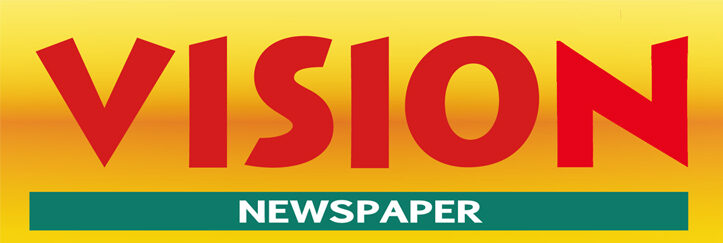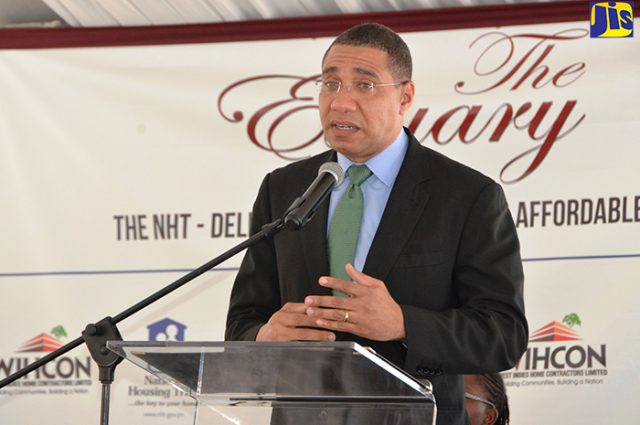Women in Dancehall

Many factors place female dancehall artists in a compromising position. When dancehall first emerged in the late 1970s, they were definitely less prevalent. However since then more ladies have joined the music roster, recording popular songs and going toe to toe with their male counterparts. The numbers seemed to reach its peak during the noughties (2000s) before dipping since the 2010s.
The ‘elephants in the room’ are the gender inequalities which stalk the music industry; this is not often discussed but it plays a huge part in the exclusion of the female artist within dancehall. Furthermore, these inequalities make the question of sustainability difficult for the women who do manage to break into the scene. Artists such as Toya, Tenuke, Timberlee, Miss Thing, Miss O, Bridges, Posh, Pamputtae, Nefatari appear to have somewhat gone off the radar and it is not necessarily for a lack of talent.
Legacy

Sister Nancy (above) is often hailed as the first female deejay and, in a recent interview with blogger Jacinta, she cites the difference between how women were treated in ‘her day’ and now: “In those times, men respected women because it was their job. Now they’re saying that women are equal to men…but I don’t think so. That’s not the way that women are treated…ladies (nowadays) are doing their thing, but my time was a better time, it was more cultured. You didn’t have to do so much to make a name. Maybe because there weren’t so many females out there”
Dancehall has long been underpinned by the sound system culture and radio airplay. Just as Sister Nancy rose to prominence via these platforms, so they have always been, and continue to be, instrumental in the development of an artist’s career. As it stands, there are more male disc jockeys than females, and their support of the female artist leaves a lot to be desired. This appears to be quite a paradox – these men profess their everlasting love for ladies, yet do not play their songs! It seems that this ‘love’ is more like lust; the dancehall industry is a misogynistic place where women are objectified and the primary value of most women is to be seen. Consequently, many female artists have taken note of this and adjusted to this demand, becoming more sexualized than ever before, in order to be seen and then hopefully heard. Fingers crossed.
Slackness
Artist Stylysh explained why she believes slackness is key in an interview with Irish and Chin:“When you do too much clean music dem don’t tek yu serious. So you have to show dem dat yu bad and that way you will get your ratings in the streets…”

Queen of Dancehall Lady Saw (left) was arguably the first female artist to infiltrate the music scene with risqué performances and music. This was unusual for a female artist at the time but not for males, who were just as slack. However, time has told us that this is just one facet of the many moods of Marion Hall; she has not used her sexuality as a crutch having also addressed social, personal, gender, relationship issues.
This versatility has seen her stand the test of time. If one considers the few female dancehall artists who are at the forefront of the scene now, then it can be seen that all of them find a balance between slackness and other subject matters.
Hip Hop Similarities
For the last ten years, a similar drought of female artists has been happening within Dancehall’s child – Hip Hop. And yes, the few successful female artists appear to have also combined the role of video vixen with their craft. This includes the likes of Lil Kim and Nicki Minaj.

Rapper Trina (pictured right with artist Gucci Mane) is known for her lewd expressiveness and put this into perspective when she said: “It’s like – you a female; I’m a dude. I’m not learning nothing from you. I just want to see you. So whatever you’re talking about, I probably don’t really care. I wanna just look at you”. This formula is not just confined to Dancehall or Hip Hop but also R&B, Rock. Very seldom does talent alone guarantee success when it comes to female artists – sex sells.
Whilst there is nothing wrong with sexiness and embracing one’s sexuality, this state of being can be rather empty when isolated and exploited. And unfortunately that is the content of a lot of female artist’s music who have cropped up – and disappeared – in the last fourteen years. This highlights the sobering fact that times have indeed changed, particularly when one considers past icons such as Queen Latifah, MC Lyte and Lauryn Hill, who did not have to openly feed the male fantasy to be successful. In fact, they could be rather abrasive in their style of delivery. The same can be said for dancehall matriarchs such as Lady G (bottom left), Sister Charmaine and Lady Ann.


Where’s the limit?
What’s more, the industry’s insatiable appetite for sex can tip the scale at times. A well-known female dancehall artist, who will remain anonymous, said the following during a candid conversation with me: “at one point, when I was up and coming, it was like if mi nah f*** certain man like DJs and producers, mi nah go get the song voiced or played. And a so di ting set right now. So, for a woman who is not prepared to do that, it can make things difficult. But on the other hand, you get some women who are prepared to do that and do…which also makes the situation bad for the rest.”

Danielle DI (right) has been in the industry for a while and has been recently getting more recognition, especially since blowing away the ‘Jamworld’ (Portmore) at last year’s Sting stage-show. During an interview with Nightly Fix News Talk 93FM she comments that when she was up and coming she struggled with “men who did not want to keep it just business”. In saying that, she points out those incidents have become scarcer since she’s become more established.
Passa Passa
Personal scandals are publicly unraveling the careers of some promising female artists. Unsurprisingly, these are all to do with men! For instance, despite the fact that she has a succesful career in her own right, D’Angel will probably always face flack from the public for being subsequently involved in relationships with rivals Bounty Killer and Beenie Man. Moreover, she has been the topic of jokes in male artists’ songs. On the other hand, apart from a few diss tracks from Bounty, Beenie’s career was not negatively impacted by his union with her.
Downsound Records’ artist Ishawna has been steadily rising in popularity over the years, but her public break up with popular disc jockey/selector Foota Hype has received greater attention. This has somewhat overshadowed her music.

Bursting onto the scene in 2007, Raine Seville began to gradually forge a promising career as the First lady of Daseca; she was also involved in a long term relationship with label mate Bugle. In 2013, she scored a hit song with Konshens ‘Sekkle Dung’, in and around this time she split up with Bugle and many ‘isms and schisms’ ensued! He was openly critical of her and Konshens’ steamy promo photos (left) and cast aspersions on her, as the mother of their three year old daughter. In true dancehall fashion, scores of patrons jumped on the wagon too, hurling critique at her via social media platforms! What’s more, Bugle penned and released ‘Nuh Compatible’ which was a mega success and widely thought to be a dig at his ex-partner. Raine’s musical output has declined.
Gaza Slim (Vanessa Bling, below on the left) has just been vindicated of a perjury charge in connection with Vybz Kartel’s murder case; during this time, her musical output plummeted. Her popularity has not dwindled and she is planning a ‘comeback’. Here is an incredibly talented and promising young lady who is responsible for one of dancehall’s major feminist anthems ‘Independent Ladies’.

Another of Kartel’s protégées Gaza Kym (Kym Hamilton) sensationally left his musical ‘Portmore Empire’ clique, having alleged that Kartel was physically abusive towards her. The success of her subsequent output has declined, having done so.

In and around this time, explicit pictures of Lisa Hype (right) began to surface, in which she is seen performing a sex act on a male, rumoured to be Kartel and even alluded to be so, by the man himself. There was never any exact confirmation about who exactly leaked these shots. This was a huge blow to her career, from which she is yet to properly bounce back.
At this particular time, Hype was also involved in an exchange of several diss tracks between fellow artists Stacious and Spice respectively. She admitted feeling “ganged up against”, to Jamaican Personality Winford Williams. On that note, let’s explore another timeless factor that never fails to drive a wedge between ladies in any situation – catfights!
Rivalry
In a recent interview with Boomshots, Tifa suggested that the relationship between female artists leaves a lot to be desired: “Things are going better than before for female artists but we’re not there yet. If we unify then things could be better but it’s going to be hard for that to happen as everyone wants to be the ‘it’ person.”

Feuds certainly seemed to be at its height from 2012 – 2013; Spice and Macka Diamond (left) were at loggerheads, Lady Saw and Tifa had a short-lived moment and even Spice and Lady Saw. At ‘Sting’ 2013, Macka Diamond and Lady Saw engaged in a scathing clash, which became very personal. Although media and fans bought into all of the aforementioned feuds and helped to sensationalise them, these incidents caused a divide amongst the already scarce female artists which was a shame.
Since then, the dust has settled amongst all parties and this is good news because they all just happen to currently be dancehall’s leading female artists. Cecile and Tanya Stephens are two further examples of the few ladies who have long-cemented their place at the forefront of the scene.
Learning Curve
In dancehall’s earlier days there certainly were less female artists on the whole; however the turnover rate was also low. This is a contrast to nowadays, where there have been more female artists surfacing here and there. However the turnover rate is higher meaning they do not remain relevant.
Sure, there is always the factor that some artists pursue a career in music solely for the promise of fame and fortune, which is not usually enough to ensure longevity. However the plight of women in dancehall has much more to do with the pressures that come with it a male dominated industry.
So, with this said, a lot of the more recent contributions from the ladies are more valuable in terms of context than content. In that, the musky music has a tendency to inadvertently document the plight of an oppressed sex, literally being stripped of respect. Most tragically of all, the culprits behind this deprivation are not always the ones doing the stripping but sometimes the stripped, themselves, who subscribe to the industry by any means necessary.
NW




